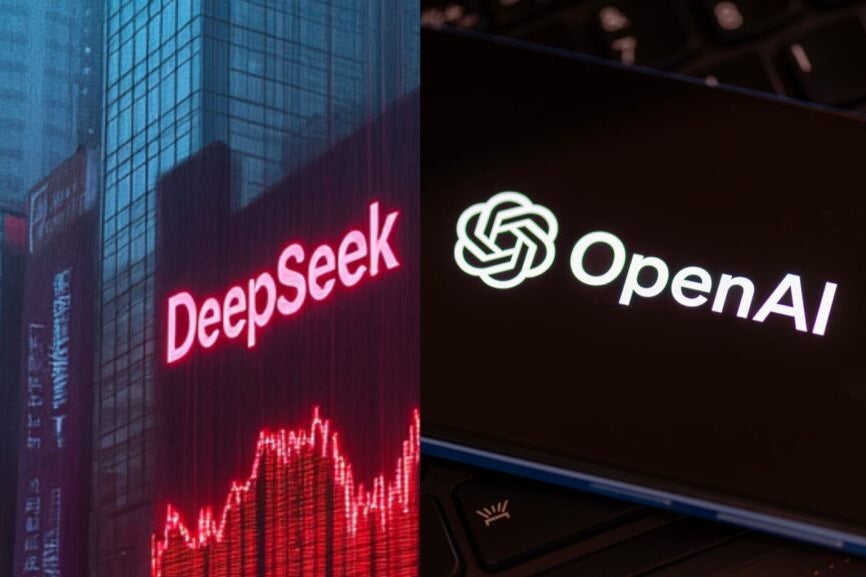Unveiling the Truth: DeepSeek’s Output Mirrors ChatGPT’s 74% Similarity
A recent study has stirred significant discussion within the tech community by revealing that DeepSeek’s generated content bears a striking 74% similarity to that produced by OpenAI’s ChatGPT. This finding compels us to delve deeper into the implications for artificial intelligence development and the competitive dynamics within the tech industry. As AI continues to evolve, understanding these similarities could provide insights into the future of AI applications and innovation.
Understanding the Findings: The Study’s Methodology
The study conducted to analyze the similarities between DeepSeek and ChatGPT utilized advanced algorithms to compare text outputs. Researchers employed a mix of qualitative and quantitative methods to evaluate **semantic similarity** and **stylistic consistency**. By assessing a diverse range of prompts and responses from both AI models, the researchers found that the responses from DeepSeek closely mirrored those of ChatGPT in terms of structure, content, and even tone.
Key aspects of the study included:
- Data Sampling: Researchers used a comprehensive dataset that included prompts across various domains, ensuring a balanced comparison.
- Similarity Metrics: A combination of cosine similarity and Jaccard index was applied to quantify the similarity between the outputs.
- Qualitative Analysis: Experts reviewed selected outputs for thematic and stylistic consistency.
The Implications of 74% Similarity
The revelation that DeepSeek’s output is 74% similar to ChatGPT raises several critical questions for developers, users, and regulators alike. Here are some of the implications worth considering:
1. Competitive Landscape in AI Development
The tech industry thrives on innovation and differentiation. With DeepSeek’s high similarity score to ChatGPT, it challenges the notion of unique AI identities. This raises questions about competition:
- Will companies invest in developing unique features, or will they follow similar models?
- How will this similarity affect user choice and market share among AI providers?
2. Ethical Considerations
As AI technologies evolve, ethical concerns regarding content originality and intellectual property become paramount. The close resemblance between the outputs of DeepSeek and ChatGPT may lead to discussions on:
- Plagiarism and copyright issues in AI-generated content.
- The responsibility of AI developers to ensure originality.
3. User Trust and Reliability
For end-users, trust in AI-generated content is crucial. If two models produce similar outputs, users may question the reliability and authenticity of the information. This could lead to:
- An increase in skepticism towards AI-generated content.
- A demand for more transparency about AI models’ training and data sourcing.
As developers and researchers analyze the findings, the future of AI will likely involve navigating these similarities. Here are some potential paths forward:
1. Innovation through Differentiation
AI developers may focus on creating unique algorithms and training methodologies to set their models apart. Innovations could include:
- Specialized training datasets tailored to niche markets.
- Enhanced personalization features that adapt to individual user preferences.
2. Collaborative Development
Instead of competing head-to-head, companies might explore collaborative opportunities. By sharing insights and technologies, they could:
- Develop hybrid models that combine the strengths of multiple AI systems.
- Accelerate advancements in AI technology through shared research and resources.
3. Establishing Regulatory Frameworks
As the AI landscape evolves, regulatory bodies may need to step in to establish guidelines that ensure ethical AI development. This could involve:
- Creating standards for transparency and accountability in AI outputs.
- Implementing measures to prevent misuse of AI technologies.
Conclusion: Embracing the Future of AI
The discovery of a 74% similarity between DeepSeek’s and ChatGPT’s outputs serves as a pivotal moment in the AI landscape. It prompts developers, users, and regulators to reflect on the nature of AI-generated content and the ethical implications of these findings. Moving forward, the challenge lies in fostering innovation while ensuring that AI remains a trustworthy tool for users. By embracing collaboration and ethical standards, the tech industry can navigate the complexities of similarity and continue to drive progress in AI development.
As we stand on the brink of an AI-driven future, it’s essential not just to unveil the truth about similarities but to harness these insights to fuel creativity and integrity in technology. The journey of AI is ongoing, and with it comes the promise of a world enriched by intelligent, responsible, and innovative solutions.
See more Future Tech Daily

